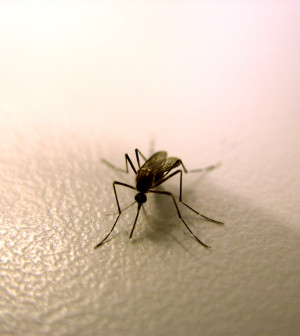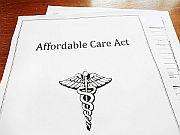- Navigating Your Midlife Crisis: Embracing New Possibilities
- City Raccoons Showing Signs of Domestication
- Mapping the Exposome: Science Broadens Focus to Environmental Disease Triggers
- One Week Less on Social Media Linked to Better Mental Health
- Your Brain Changes in Stages as You Age, Study Finds
- Some Suicide Victims Show No Typical Warning Signs, Study Finds
- ByHeart Formula Faces Lawsuits After Babies Sickened With Botulism
- Switch to Vegan Diet Could Cut Your Greenhouse Gas Emissions in Half
- Regular Bedtime Does Wonders for Blood Pressure
- Dining Alone Could Mean Worse Nutrition for Seniors
Low-Income HIV Patients May Be Doing Better on Obamacare


Low-income HIV patients who enrolled in Obamacare may be faring better than they did on traditional state assistance, a new study suggests.
At least that’s the case in Virginia, where the study was done. Researchers found that people infected with HIV (the virus that causes AIDS) who switched from the state’s drug-assistance program to an Obamacare insurance plan had greater odds of gaining better control of the disease.
Those who enrolled in a plan in 2014 were more likely to get their HIV “viral load” down to very low or undetectable levels in the blood, the study found.
“That’s the most exciting finding from this study,” said lead researcher Dr. Kathleen McManus, a fellow at the University of Virginia School of Medicine, in Charlottesville, Va.
“When patients achieve viral load suppression, they’re healthier and they’re less likely to pass the virus on to other people,” said McManus.
McManus is scheduled to present the study results Friday at Infectious Diseases Week, a meeting of infectious disease specialists in San Diego. Findings presented at meetings are generally viewed as preliminary until they’ve been published in a peer-reviewed journal.
Virginia, like all other U.S. states, has an AIDS Drug Assistance Program (ADAP). The programs help low-income HIV patients who are either uninsured or “underinsured” afford the expensive drugs used to control the disease, the study authors said.
Traditionally, ADAP has paid for the medications, and patients generally received their medical care at federally funded clinics, according to the researchers.
But the Affordable Care Act (ACA) — also known as Obamacare — opened another option, McManus explained. ADAP programs can now sign patients up with an insurance plan, then pay for their premiums, deductibles and medication co-pays.
“There’ve been some concerns about how this large national policy change could affect patients,” McManus said.
This study offers reassurance, she said, and suggests that HIV patients could actually fare better on Obamacare.
And why would that be? It’s possible, McManus said, that people who shifted to an ACA health plan gained better access to medical care in general.
Dr. Carlos del Rio, a spokesman for the Infectious Diseases Society of America, agreed. “They may have received better care for other chronic disease, like diabetes, that commonly affect people with HIV,” said del Rio, who was not involved in the study.
Better overall health and well-being could, in turn, help people gain more control over their HIV.
Del Rio called the results “exciting,” but added that important questions remain: Is this happening in other states? And what will the longer-term effects — on both people’s health and health care spending — ultimately be?
“We need to look beyond the effects on viral load,” del Rio said.
It’s clear that “healthier patients are less expensive patients,” he noted. But the financial impact of moving ADAP patients to Obamacare health plans remains to be seen, del Rio said.
According to McManus, shifting HIV patients to Obamacare does open up resources to cover a larger number of patients. The traditional ADAP program often had wait-lists for medications and services, she said.
Moving patients to health plans could also be cost-effective for states, McManus and her colleagues suggested, because HIV drugs are so expensive.
The findings are based on a two-year study of nearly 4,000 Virginia ADAP patients who were eligible to move to an Obamacare health plan in 2014.
Overall, 47 percent made the switch, the study found. And, patients who made the switch increased their odds of achieving HIV viral suppression by 45 percent compared to patients who stayed with ADAP, the research revealed.
“Given what we found, it’s unfortunate that less than half of those patients enrolled in an ACA plan,” McManus said. One of the next steps, she added, will be to figure out what keeps people from enrolling.
This study offered some clues: Patients’ likelihood of enrolling varied according to the HIV clinic where they received care, and the federal tax credit they stood to gain, for example.
Lack of awareness, worries about medication co-pays, or even difficulty getting Internet access could all be factors, McManus said.
Virginia is not the only state moving ADAP patients into Obamacare plans, and McManus said her team’s findings raise the hope that the policy shift is having widespread positive effects.
She noted that Virginia is one of 20 states that chose not to expand Medicaid under the new health care law. Helping ADAP patients get into an Obamacare plan could be especially important in those states, she said.
More information
The Kaiser Family Foundation has more on AIDS Drug Assistance Programs.
Source: HealthDay
Copyright © 2025 HealthDay. All rights reserved.










